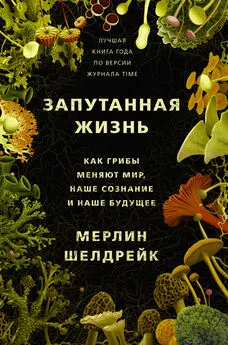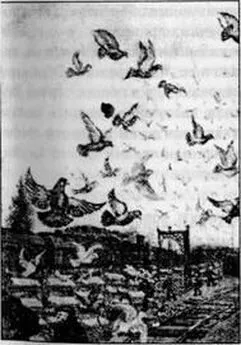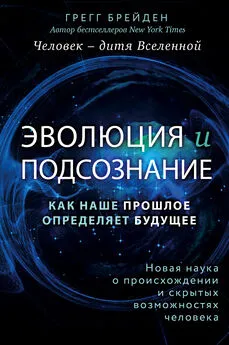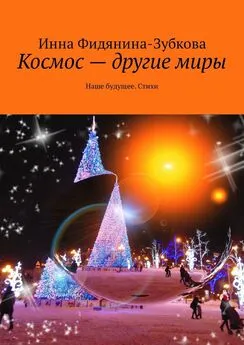Мерлин Шелдрейк - Запутанная жизнь. Как грибы меняют мир, наше сознание и наше будущее
- Название:Запутанная жизнь. Как грибы меняют мир, наше сознание и наше будущее
- Автор:
- Жанр:
- Издательство:Литагент АСТ
- Год:2021
- Город:Москва
- ISBN:978-5-17-122572-8
- Рейтинг:
- Избранное:Добавить в избранное
-
Отзывы:
-
Ваша оценка:
Мерлин Шелдрейк - Запутанная жизнь. Как грибы меняют мир, наше сознание и наше будущее краткое содержание
Талантливый молодой биолог Мерлин Шелдрейк переворачивает мир с ног на голову: он приглашает читателя взглянуть на него с позиции дрожжей, псилоцибиновых грибов, грибов-паразитов и паутины мицелия, которая простирается на многие километры под поверхностью земли (что делает грибы самыми большими живыми организмами на планете). Открывающаяся грибная сущность заставляет пересмотреть наши взгляды на индивидуальность и разум, ведь грибы, как выясняется, – повелители метаболизма, создатели почв и ключевые игроки во множестве естественных процессов. Они способны изменять наше сознание, врачевать тела и даже обратить нависшую над нами экологическую катастрофу. Эти организмы переворачивают наше понимание самой жизни на Земле.
В формате PDF A4 сохранен издательский макет.
Запутанная жизнь. Как грибы меняют мир, наше сознание и наше будущее - читать онлайн бесплатно ознакомительный отрывок
Интервал:
Закладка:
Mills BJ, Batterman SA, Field KJ. 2017. Nutrient acquisition by symbiotic fungi governs Palaeozoic climate transition. Philosophical Transactions of the Royal Society B 373: 20160503.
Milner DS, Attah V, Cook E, Maguire F, Savory FR, Morrison M, Müller CA, Foster PG, Talbot NJ, Leonard G, et al. 2019. Environment-dependent fitness gains can be driven by horizontal gene transfer of transporter-encoding genes. Proceedings of the National Academy of Sciences 116: 201815994.
Moeller HV, Neubert MG. 2016. Multiple friends with benefits: an optimal mutualist management strategy? The American Naturalist 187: E1–E12.
Mohajeri HM, Brummer RJ, Rastall RA, Weersma RK, Harmsen HJ, Faas M, Eggersdorfer M. 2018. The role of the microbiome for human health: from basic science to clinical applications. European Journal of Nutrition 57: 1–14.
Mohan JE, Cowden CC, Baas P, Dawadi A, Frankson PT, Helmick K, Hughes E, Khan S, Lang A, Machmuller M, et al. 2014. Mycorrhizal fungi mediation of terrestrial ecosystem responses to global change: mini-review. Fungal Ecology 10: 3–19.
Moisan K, Cordovez V, van de Zande EM, Raaijmakers JM, Dicke M, Lucas-Barbosa D. 2019. Volatiles of pathogenic and non-pathogenic soil-borne fungi affect plant development and resistance to insects. Oecologia 190: 589–604.
Monaco E. 2017. The Secret History of Paris’s Catacomb Mushrooms. Atlas Obscura : www.atlasobscura.com/articles/paris-catacomb-mushrooms [accessed October 29, 2019].
Mondo SJ, Lastovetsky OA, Gaspar ML, Schwardt NH, Barber CC, Riley R, Sun H, Grigoriev IV, Pawlowska TE. 2017. Bacterial endosymbionts influence host sexuality and reveal reproductive genes of early divergent fungi. Nature Communications 8: 1843.
Money NP. 2013. Against the naming of fungi. Fungal Biology 117: 463–65.
Money NP. 2004a. The fungal dining habit: a biomechanical perspective. Mycologist 18: 71–76.
Money NP. 2016. Fungi: A Very Short Introduction . Oxford, UK: Oxford University Press.
Money NP. 1999. Fungus punches its way in. Nature 401: 332–33.
Money NP. 1998. More g’s than the Space Shuttle: ballistospore discharge. Mycologia 90: 547.
Money NP. 2018 . The Rise of Yeast . Oxford, UK: Oxford University Press.
Money NP. 2004b. Theoretical biology: mushrooms in cyberspace. Nature 431: 32.
Money NP. 2007 . Triumph of the Fungi: A Rotten History . Oxford, UK: Oxford University Press.
Montañez I. 2016. A Late Paleozoic climate window of opportunity. Proceedings of the National Academy of Sciences 113: 2334–336.
Montiel-Castro AJ, González-Cervantes RM, Bravo-Ruiseco G, Pacheco-López G. 2013. The microbiota-gut-brain axis: neurobehavioral correlates, health and sociality. Frontiers in Integrative Neuroscience 7: 70.
Moore D. 2013a. Fungal Biology in the Origin and Emergence of Life . Cambridge, UK: Cambridge University Press.
Moore D. 1996. Graviresponses in fungi. Advances in Space Research 17: 73–82.
Moore D. 2005. Principles of mushroom developmental biology. International Journal of Medicinal Mushrooms 7: 79–101.
Moore, D. 2013b. Slayers, Saviors, Servants, and Sex: An Exposé of Kingdom Fungi . Springer International Publishing.
Moore D, Hock B, Greening JP, Kern VD, Frazer L, Monzer J. 1996. Gravimorphogenesis in agarics. Mycological Research 100: 257–73.
Moore D, Robson GD, Trinci APJ. 2011. 21st Century Guidebook to Fungi . Cambridge, UK: Cambridge University Press.
Mousavi SA, Chauvin A, Pascaud F, Kellenberger S, Farmer EE. 2013. GLUTAMATE RECEPTOR-LIKE genes mediate leaf-to-leaf wound signalling. Nature 500: 422–26.
Muday GK, Brown-Harding H. 2018. Nervous system-like signaling in plant defense. Science 361: 1068–69.
Mueller RC, Scudder CM, Whitham TG, Gehring CA. 2019. Legacy effects of tree mortality mediated by ectomycorrhizal fungal communities. New Phytologist 224: 155–65.
Muir J. 1912. The Yosemite . New York, NY: The Century Company. vault.sierraclub.org/john_muir_exhibit/writings/the_yosemite/ [accessed October 29, 2019].
Myers N. 2014. Conversations on plant sensing: notes from the field. NatureCulture 3: 35–66.
Naef R. 2011. The volatile and semi-volatile constituents of agarwood, the infected heartwood of Aquilaria species: a review . Flavour and Fragrance Journal 26: 73–87.
Nakagaki T, Yamada H, Tóth A. 2000. Maze-solving by an amoeboid organism. Nature 407: 470.
Nelson ML, Dinardo A, Hochberg J, Armelagos GJ. 2010. Mass spectroscopic characterization of tetracycline in the skeletal remains of an ancient population from Sudanese Nubia 350–55 °CE. American Journal of Physical Anthropology 143: 151–54.
Nelsen MP, DiMichele WA, Peters SE, Boyce KC. 2016. Delayed fungal evolution did not cause the Paleozoic peak in coal production. Proceedings of the National Academy of Sciences 113: 2442–447.
Newman EI. 1988. Mycorrhizal links between plants: their functioning and ecological significance. Advances in Ecological Research 18: 243–70.
Nikolova I, Johanson KJ, Dahlberg A. 1997. Radiocaesium in fruitbodies and mycorrhizae in ectomycorrhizal fungi. Journal of Environmental Radioactivity 37: 115–25.
Niksic M, Hadzic I, Glisic M. 2004. Is Phallus impudicus a mycological giant? Mycologist 18: 21–22.
Noë R, Hammerstein P. 1995. Biological markets. Trends in Ecology & Evolution 10: 336–39.
Noë R, Kiers TE. 2018. Mycorrhizal Markets, Firms, and Co-ops. Trends in Ecology & Evolution 33: 777–89.
Nordbring-Hertz B. 2004. Morphogenesis in the nematode-trapping fungus Arthrobotrys oligospora —an extensive plasticity of infection structures. Mycologist 18: 125–33.
Nordbring-Hertz B, Jansson H, Tunlid A. 2011. “Nematophagous Fungi.” In Encyclopedia of Life Sciences . Chichester, UK: John Wiley & Sons Ltd.
Novikova N, Boever P, Poddubko S, Deshevaya E, Polikarpov N, Rakova N, Coninx I, Mergeay M. 2006. Survey of environmental biocontamination on board the International Space Station. Research in Microbiology 157: 5–12.
Oettmeier C, Brix K, Döbereiner H-G. 2017. Physarum polycephalum —a new take on a classic model system. Journal of Physics D: Applied Physics 50: 41.
Oliveira AG, Stevani CV, Waldenmaier HE, Viviani V, Emerson JM, Loros JJ, Dunlap JC. 2015. Circadian control sheds light on fungal bioluminescence. Current Biology 25: 964–68.
Olsson S. 2009. “Nutrient Translocation and Electrical Signalling in Mycelia.” In The Fungal Colony . Gow NAR, Robson GD, Gadd GM, eds. Cambridge, UK: Cambridge University Press, pp. 25–48.
Olsson S, Hansson B. 1995. Action potential – like activity found in fungal mycelia is sensitive to stimulation. Naturwissenschaften 82: 30–31.
O’Malley MA. 2015. Endosymbiosis and its implications for evolutionary theory. Proceedings of the National Academy of Sciences 112: 10270–277.
Oolbekkink GT, Kuyper TW. 1989. Radioactive caesium from Chernobyl in fungi. Mycologist 3: 3–6.
O’Regan HJ, Lamb AL, Wilkinson DM. 2016. The missing mushrooms: Searching for fungi in ancient human dietary analysis. Journal of Archaeological Science 75: 139–43.
Orrell P. 2018. Linking Above and Below-Ground Interactions in Agro-Ecosystems: An Ecological Network Approach . PhD thesis, University of Newcastle, Newcastle, UK. theses.ncl.ac.uk/jspui/handle/10443/4102 [accessed October 29, 2019].
Osborne OG, De-Kayne R, Bidartondo MI, Hutton I, Baker WJ, Turnbull CG, Savolainen V. 2018. Arbuscular mycorrhizal fungi promote coexistence and niche divergence of sympatric palm species on a remote oceanic island. New Phytologist 217: 1254–266.
Ott J. 2002. Pharmaka, philtres, and pheromones. Getting high and getting off. MAPS XII: 26–32.
Otto S, Bruni EP, Harms H, Wick LY. 2017. Catch me if you can: dispersal and foraging of Bdellovibrio bacteriovorus 109J along mycelia. The ISME Journal 11: 386–93.
Ouellette NT. 2019. Flowing crowds. Science 363: 27–28.
Oukarroum A, Gharous M, Strasser RJ. 2017. Does Parmelina tiliacea lichen photosystem II survive at liquid nitrogen temperatures? Cryobiology 74: 160–62.
Ovid. 1958. Ovid: The Metamorphoses . Gregory H., trans. New York, NY: Viking Press.
Pagán OR. 2019. The brain: a concept in flux. Philosophical Transactions of the Royal Society B 374: 20180383.
Paglia C. 2001. Sexual Personae: Art and Decadence from Nefertiti to Emily Dickinson . New Haven, CT: Yale University Press.
Pan X, Pike A, Joshi D, Bian G, McFadden MJ, Lu P, Liang X, Zhang F, Raikhel AS, Xi Z. 2017. The bacterium Wolbachia exploits host innate immunity to establish a symbiotic relationship with the dengue vector mosquito Aedes aegypti. The ISME Journal 12: 277–88.
Patra S, Banerjee S, Terejanu G, Chanda A. 2015. Subsurface pressure profiling: a novel mathematical paradigm for computing colony pressures on substrate during fungal infections. Scientific Reports 5: 12928.
Peay KG. 2016. The mutualistic niche: mycorrhizal symbiosis and community dynamics. Annual Review of Ecology, Evolution, and Systematics 47: 1–22.
Peay KG, Kennedy PG, Talbot JM. 2016. Dimensions of biodiversity in the Earth mycobiome. Nature Reviews Microbiology 14: 434–47.
Peintner U, Poder R, Pumpel T. 1998. The iceman’s fungi. Mycological Research 102: 1153–162.
Pennazza G, Fanali C, Santonico M, Dugo L, Cucchiarini L, Dachà M, D’Amico A, Costa R, Dugo P, Mondello L. 2013. Electronic nose and GC – MS analysis of volatile compounds in Tuber magnatum Pico: Evaluation of different storage conditions. Food Chemistry 136: 668–74.
Pennisi E. 2019a. Algae suggest eukaryotes get many gifts of bacteria DNA. Science 363: 439–40.
Pennisi E. 2019b. Chemicals released by bacteria may help gut control the brain, mouse study suggests. Science : www.sciencemag.org/news/2019/10/chemicals-released-bacteria-may-help-gut-control-brain-mouse-study-suggests [accessed October 29, 2019].
Peris JE, Rodríguez A, Peña L, Fedriani J. 2017. Fungal infestation boosts fruit aroma and fruit removal by mammals and birds. Scientific Reports 7: 5646.
Perrottet T. 2006. Mt. Rushmore. Smithsonian Magazine : www.smithsonianmag.com/travel/mt-rushmore-116396890/ [accessed October 29, 2019].
Petri G, Expert P, Turkheimer F, Carhart-Harris R, Nutt D, Hellyer P, Vaccarino F. 2014. Homological scaffolds of brain functional networks. Journal of The Royal Society Interface 11: 20140873.
Pfeffer C, Larsen S, Song J, Dong M, Besenbacher F, Meyer R, Kjeldsen K, Schreiber L, Gorby YA, El-Naggar MY, et al. 2012. Filamentous bacteria transport electrons over centimetre distances. Nature 491: 218–21.
Phillips RP, Brzostek E, Midgley MG. 2013. The mycorrhizal-associated nutrient economy: a new framework for predicting carbon – nutrient couplings in temperate forests. New Phytologist 199: 41–51.
Pickles B, Egger K, Massicotte H, Green D. 2012. Ectomycorrhizas and climate change. Fungal Ecology 5: 73–84.
Pickles BJ, Wilhelm R, Asay AK, Hahn AS, Simard SW, Mohn WW. 2017. Transfer of 13C between paired Douglas-fir seedlings reveals plant kinship effects and uptake of exudates by ectomycorrhizas. New Phytologist 214: 400–11.
Читать дальшеИнтервал:
Закладка:









